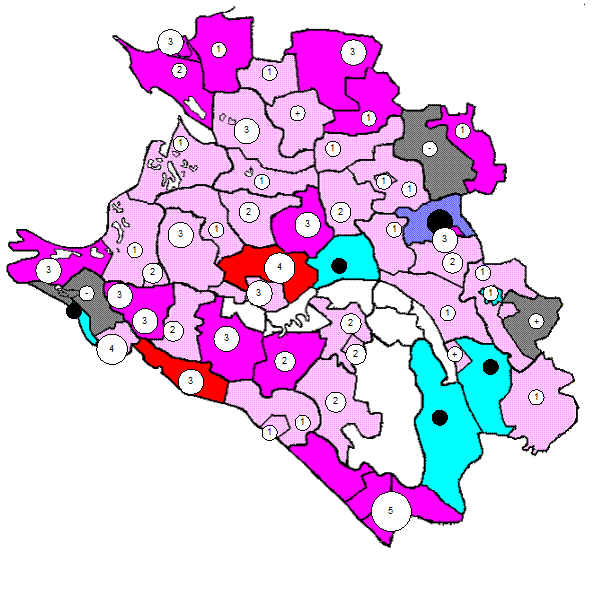Development of architecture in Kyivan Rus
By the time of adopting Christianity, Rus was good at wooden sculpture, moulding and embossing. As for architecture, it surely existed, but it is difficult to say anything definite about it as not a single monument of that epoch has survived. According to archeological diggings there wasn’t any monumental stone architecture till the end of the 10th century. There were either wooden constructions or earth-houses for wood and clay were in abundance. Clay bricks became widespread from the middle of the 10th century. Wooden architecture became the basis of the peculiar style of Rus, which provided optimal combination of beauty and functionality.
In the 10-11th centuries there were mainly Byzantine builders engaged in stone architecture. There were many difficulties for them. Firstly, the building materials differed much from the Byzantine ones. Secondly, Russian people were accustomed to wooden architecture. In the years of feudal disunity there appeared various stone laying styles. They concerned mainly materials. Thus in Novgorod builders used limestone, while in Kyiv, Smolensk, Chernigov and Ryazan’ – plinth (broad and flat burnt stone) was used. The majority of churches were one-domed. Mosaic pictures started giving way to frescoes.
Answer the questions: 1. Why is it difficult to say anything definite about ancient Russian architecture? 2. What building material was popular with the Slavs? 3. Why did builders prefer an axe to a saw? 4. What size were common houses constructed? 5. Were there any signs if double belief in Russian houses? 6. What phenomenon affected the health of tenants? 7. What problems did foreign builders face in Rus? 8. What changes in the years of feudal disunity took place in architecture?
|

 Old masters kept special building technologies high. For many centuries the main, and often the only tool of builders was the axe. The saw tears wood fibers, making them open for water. As for the axe, it crushes fibers and so seals the butt-ends. This is why saws were used only in joinery.
Old masters kept special building technologies high. For many centuries the main, and often the only tool of builders was the axe. The saw tears wood fibers, making them open for water. As for the axe, it crushes fibers and so seals the butt-ends. This is why saws were used only in joinery. Till the end of the 17th century even houses of the richest noblemen and merchants were made of wood. Log houses dotted the Russian countryside for centuries.The houses of common peasantry were of the substantial size. They were often intended to accommodate several generations of a family. The living quarters were confined largely to one room with a partition dividing off the kitchen area, dominated by a stove on the top of which the elderly and the young children would sleep. Traditionally the benches around the side of the room doubled as beds. Most houses lacked chimneys, so the stove was stoked, filling the room with smoke, then windows opened to clear the air. (Chimney-less or ‘smoky’ houses continued to be built up to the mid of the 19th century.) The houses displayed evidence of popular religion – an icon in the red corner but also under it there were rye or oat sheaves as “a fertility offering” and field herbs in the beams to ward off the evil spirits.
Till the end of the 17th century even houses of the richest noblemen and merchants were made of wood. Log houses dotted the Russian countryside for centuries.The houses of common peasantry were of the substantial size. They were often intended to accommodate several generations of a family. The living quarters were confined largely to one room with a partition dividing off the kitchen area, dominated by a stove on the top of which the elderly and the young children would sleep. Traditionally the benches around the side of the room doubled as beds. Most houses lacked chimneys, so the stove was stoked, filling the room with smoke, then windows opened to clear the air. (Chimney-less or ‘smoky’ houses continued to be built up to the mid of the 19th century.) The houses displayed evidence of popular religion – an icon in the red corner but also under it there were rye or oat sheaves as “a fertility offering” and field herbs in the beams to ward off the evil spirits.


